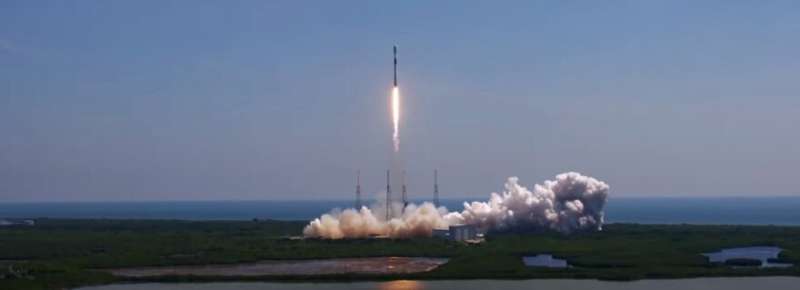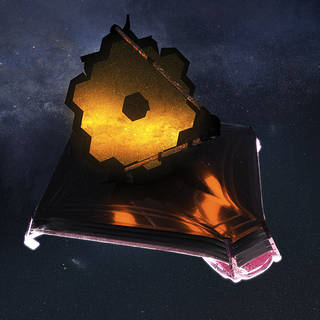NASA humanoid robot to be tested in Australia
Saturday, 08 July 2023 08:20 Houston TX (SPX) Jul 08, 2023
NASA's Valkyrie robot is beginning a new mission half a world away from its home at the agency's Johnson Space Center in Houston. As part of a reimbursable Space Act Agreement with Woodside Energy in Perth, Western Australia, NASA plans to use a Valkyrie robot to develop remote mobile dexterous manipulation capabilities to accommodate remote caretaking of uncrewed
Houston TX (SPX) Jul 08, 2023
NASA's Valkyrie robot is beginning a new mission half a world away from its home at the agency's Johnson Space Center in Houston. As part of a reimbursable Space Act Agreement with Woodside Energy in Perth, Western Australia, NASA plans to use a Valkyrie robot to develop remote mobile dexterous manipulation capabilities to accommodate remote caretaking of uncrewed Rise of the robots: UN tries to tackle 'mind-blowing' growth of AI
Saturday, 08 July 2023 08:20 The mind-blowing growth of artificial intelligence poses many questions that have no answers yet, the United Nations admitted Thursday at its AI summit, attended by some exceptionally life-like humanoid robots.
The UN is aware that AI technology is racing ahead of the capacity to set its boundaries and directions, and so it brought together some of the best minds on the topic - whether huma
The mind-blowing growth of artificial intelligence poses many questions that have no answers yet, the United Nations admitted Thursday at its AI summit, attended by some exceptionally life-like humanoid robots.
The UN is aware that AI technology is racing ahead of the capacity to set its boundaries and directions, and so it brought together some of the best minds on the topic - whether huma Space Act Agreement with NASA will advance UArizona engagement in human spaceflight
Saturday, 08 July 2023 08:20 An agreement with the Johnson Space Center will allow the University of Arizona to be substantially involved in human spaceflight expeditions. The University of Arizona recently signed a Space Act Agreement with NASA's Johnson Space Center that will allow the university to engage extensively in human spaceflight missions.
The agreement will take the university's current association with NA
An agreement with the Johnson Space Center will allow the University of Arizona to be substantially involved in human spaceflight expeditions. The University of Arizona recently signed a Space Act Agreement with NASA's Johnson Space Center that will allow the university to engage extensively in human spaceflight missions.
The agreement will take the university's current association with NA Plasmos pivots from rocket engines to VC
Saturday, 08 July 2023 00:17
Plasmos, the Los Angeles-based startup developing rocket engines, is pivoting to become an artificial intelligence-driven venture capital firm.
The post Plasmos pivots from rocket engines to VC appeared first on SpaceNews.
Merger rumors swirl around Dish and EchoStar
Friday, 07 July 2023 18:37
Satellite TV broadcaster Dish Network is rumored to be considering recombining with internet-focused sister company EchoStar to strengthen its financial resources.
Interest grows for human spaceflight in Europe
Friday, 07 July 2023 18:34
As the European Space Agency continues to develop proposals for human space exploration efforts, more European countries are showing an interest in launching astronauts.
Congress should stop the coming regulatory assault on commercial space
Friday, 07 July 2023 18:10
The Biden administration has launched a commercial space regulation initiative under the name of “mission authorization,” which is laying the groundwork for a potentially debilitating web of unnecessary regulation on the U.S.
The psychology of space exploration — and why it matters on Earth
Friday, 07 July 2023 17:33
Astronauts ride a pillar fire off the planet, so naturally, they encounter some fear along the way.
After the launch of Euclid: 'This is a big step toward understanding dark matter and dark energy'
Friday, 07 July 2023 16:32
What is it like to work on the fundamental questions about the universe? On July 1, the Euclid satellite launched successfully. This mission from the European Space Agency will take images of the sky to create the most detailed map of the universe ever made. Astronomer Henk Hoekstra (Leiden Observatory) and physicist Alessandra Silvestri (Leiden Institute of Physics) tell about their role in the mission.
The new space satellite is like the Google of the universe. "Euclid is basically a data-gathering machine," Hoekstra explains. "What Hubble covered in 30 years, Euclid can do in one week in both optical and infrared wavelengths. So it's a huge volume of data. With this, you are guaranteed to find the needle in a haystack."
Hoekstra has multiple roles in the mission. He is the lead of the weak lensing group and one of the four cosmology coordinators. This means he was involved from the early stages to set the requirements for the accuracy of the data Euclid will obtain.
Join NASA to Celebrate Webb Space Telescope’s First Year of Science
Friday, 07 July 2023 16:31 NASA is commemorating the first year of science and discoveries from the agency’s James Webb Space Telescope, the largest, most powerful, and most complex space telescope ever built. To celebrate the anniversary, multiple events will take place online and live across the U.S.
NASA is commemorating the first year of science and discoveries from the agency’s James Webb Space Telescope, the largest, most powerful, and most complex space telescope ever built. To celebrate the anniversary, multiple events will take place online and live across the U.S. For the People: The motivations fueling Ecuador’s space journey
Friday, 07 July 2023 13:16
It’s said nature abhors a vacuum. The same is true of leadership. In the global space community, a government body is almost always a leading component of a nation’s growing […]
Chinese launch firm secures fresh funding for reusable rocket
Friday, 07 July 2023 12:56
Chinese rocket firm Space Pioneer has secured C-round funding for its Tianlong-3 medium-lift reusable launch vehicle.
SYRACUSE 4B Satellite Launched: Boost for French Military Communications
Friday, 07 July 2023 12:18 European aerospace company Airbus, in partnership with Thales Alenia Space, successfully launched SYRACUSE 4B, a secure military communications satellite, from the Guiana Space Center in Kourou, French Guiana. This launch marked the last mission of Ariane 5, the European heavy launcher.
SYRACUSE 4B joins SYRACUSE 4A in orbit, with both satellites forming the space component of SYRACUSE IV,
European aerospace company Airbus, in partnership with Thales Alenia Space, successfully launched SYRACUSE 4B, a secure military communications satellite, from the Guiana Space Center in Kourou, French Guiana. This launch marked the last mission of Ariane 5, the European heavy launcher.
SYRACUSE 4B joins SYRACUSE 4A in orbit, with both satellites forming the space component of SYRACUSE IV, China Achieves Milestone in Satellite-to-ground Laser Communications
Friday, 07 July 2023 12:18 The Aerospace Information Research Institute (AIR) under the Chinese Academy of Sciences (CAS), in partnership with the Changguang Satellite Technology, successfully conducted a satellite-to-ground laser communication experiment at a speed of 10 gigabyte per second (GB/s) using self-developed 500-millimeter-diameter ground system and Jilin-1 satellite.
The experiment obtained good-quality
The Aerospace Information Research Institute (AIR) under the Chinese Academy of Sciences (CAS), in partnership with the Changguang Satellite Technology, successfully conducted a satellite-to-ground laser communication experiment at a speed of 10 gigabyte per second (GB/s) using self-developed 500-millimeter-diameter ground system and Jilin-1 satellite.
The experiment obtained good-quality Earth formed from dry, rocky building blocks
Friday, 07 July 2023 12:18 Billions of years ago, in the giant disk of dust, gas, and rocky material that orbited our young sun, larger and larger bodies coalesced to eventually give rise to the planets, moons, and asteroids we see today. Scientists are still trying to understand the processes by which planets, including our home planet, were formed. One way researchers can study how Earth formed is to examine the magmas
Billions of years ago, in the giant disk of dust, gas, and rocky material that orbited our young sun, larger and larger bodies coalesced to eventually give rise to the planets, moons, and asteroids we see today. Scientists are still trying to understand the processes by which planets, including our home planet, were formed. One way researchers can study how Earth formed is to examine the magmas 
